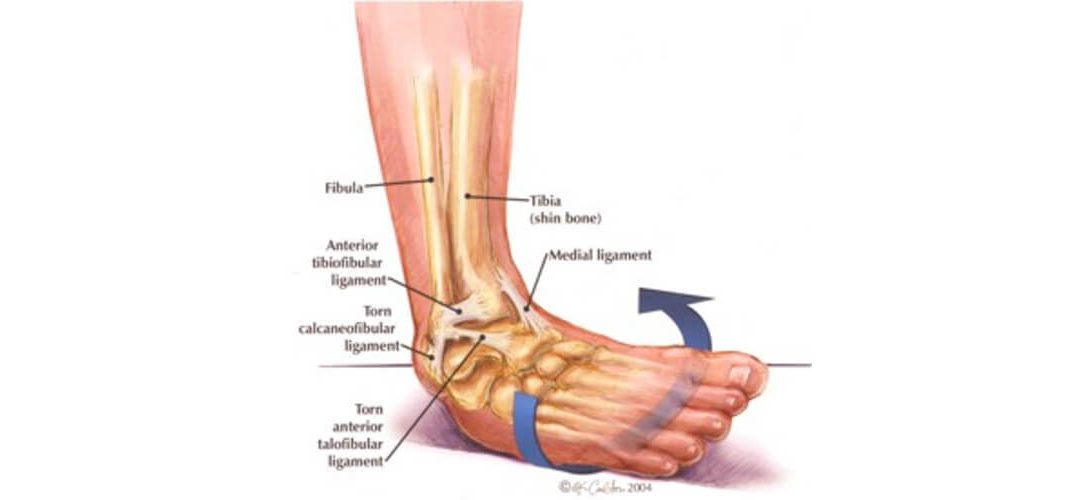A lateral ankle sprain is one of the most common injuries in many sports including, AFL, soccer, rugby league and netball. Lateral ankle sprains generally occur when landing on an uneven surface causing your foot to forcefully invert (roll out). The severity of your ankle sprain is dependent on how many ligaments are damaged and to what extent those ligaments are stretched or torn.
What are the symptoms of a sprained ankle?
A mechanism of injury is present in nearly all cases. You would have experienced an episode where you rolled your ankle and felt a pain in the outside of your ankle. Depending on the severity you can sometimes hear a crack or popping sound during the incident. There will usually be swelling in the lateral ankle and foot as well as bruising and it will be tender to touch. Again depending on the severity you may struggle to put weight through your foot and have a limp.
What ligaments are normally damaged?

The most common ligament that is torn is the Anterior Talofibular ligament (ATFL) and then the calcaneofibular ligament (CFL). In more severe cases the Deltoid ligament on the medial side and the AnteriorInferior Tibio-Fibular ligament (AITFL) which is sometimes referred to as our syndesmosis ligament may be damaged as well.
How is a sprained ankle diagnosed?
Most ankle sprains can be diagnosed by a physiotherapist through a thorough subjective and physical exam. Physiotherapists are equipped with a number of special tests to help identify which ligaments are involved and to what extent these ligaments are damaged. If needed the physiotherapist may send you off for an X-Ray, CT or MRI to rule out any other serious pathology.
Treatment for a lateral ankle sprain
Unfortunately the risk of re-injury with a lateral ankle sprain is as high as 40-70%, but the better the rehabilitation is the less likely yur chance of re-injury.
In the initial phases the priority is swelling management and getting you to walk with a normal gait/walking pattern. Then the focus is on a progressive rehabilitation program to help restore full range of motion of your ankle and lower limb strength and then progress into sport specific tasks such as balance, running, landing and hopping. You will then be given a return to run program which starts with straight line running and progresses to agility based exercises and sport specific drills. Your physiotherapist will have a set criteria that you will need to reach before returning to sport.


